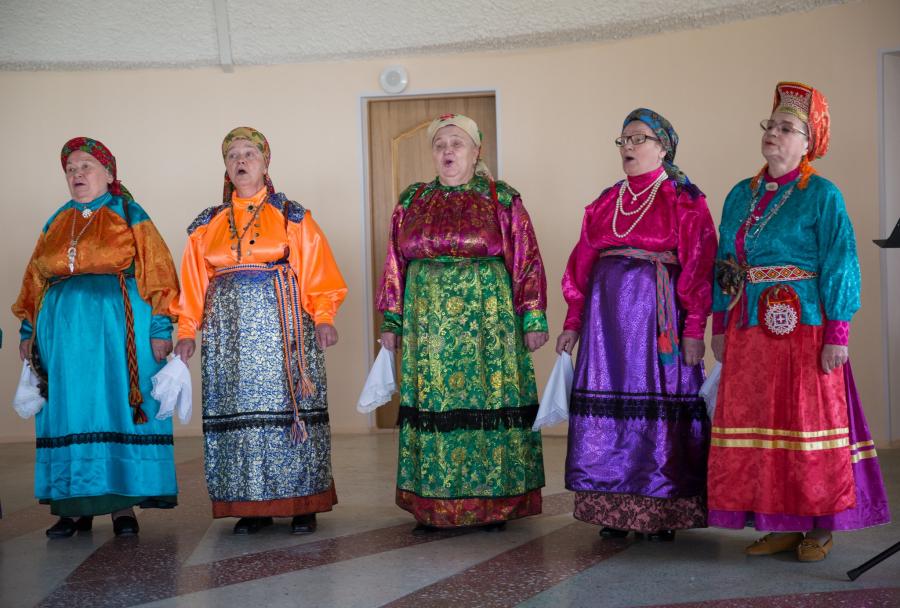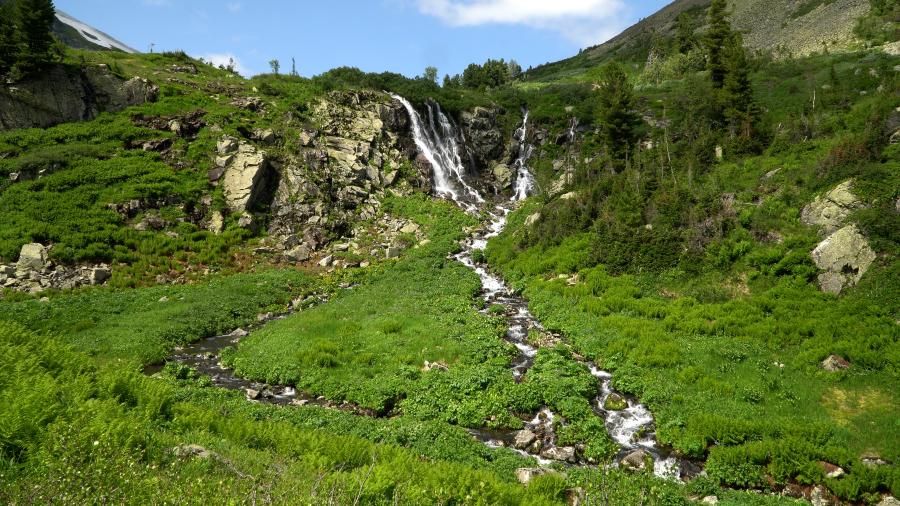As reindeer herders in other parts of south Siberia fight for cultural survival in their homelands, those who once resided in the Viliui River watershed have already lost. The Tungus who lived in the watershed, located in the western part of the present-day Sakha Republic (formerly known as Yakutia) of the Russian Federation, all but vanished over the course of the last 500 years due to a variety of infringements by incoming peoples. Many of the same forces that led to the demise of the Viliui reindeer herders—including assimilation into more dominant cultures, loss of control over and access to indigenous lands and natural resources, and forced relocation of indigenous settlements to make way for industrial development—today threaten the remaining peoples that comprise the south-Siberian reindeer herders. Hopefully, the demise of the Viliui reindeer-herding complex will shed some light on the contemporary threats to the South-Siberian Reindeer-Herding Complex. Given the contemporary evidence of the importance of cultural and ecological diversity in the maintenance of global ecosystems, finding ways to facilitate the survival of these vital south-Siberian reindeer-herding cultures and preventing them from falling victim to the same fate as the Viliui reindeer herders is imperative.
Prior to the 16th-century influx of agropastoralist Sakha, reindeer herding and hunting were the main subsistence activities on the Viliui River, and were practiced by Tungus-speaking Evenki (commonly referred to simply as “Tungus”), and by non-agropastoralist Sakha. The Sakha are Turkic-language speakers whose ancestors migrated from the Lake Baikal area of southern Siberia to the sub-arctic regions of the middle Lena and Viliui between the 14th and 16th centuries. The majority of Sakha are horse- and cattle-breeding agropastoralists, but those Sakha who arrived in the Viliui River area earliest practiced a Tungus lifestyle of reindeer herding, hunting, and fishing, and are even referred to by one scholar as the “northern reindeer-herding Sakha.” (Ksentofontov) Existing records generally lump both the reindeer-herding Sakha and the Tungus-speaking Evenki under the common term “Tungus.” Hence the term “Tungus” is used here as a general term to refer to the non-agropastoralist reindeer-herding populations of the Viliui River area, both Tungus-speaking Evenki and Sakha alike.
Sakha Invasion
The demise of the Viliui reindeer-herding complex began in the mid-16th century with the arrival of agropastoralist Sakha in the Viliui regions. Although the historical record is lacking for that period, legends and oral narratives document that these Sakha fought and either killed, assimilated, or drove away the Tungus. Sakha are depicted in these narratives as sly traders who deceived and exploited the local inhabitants, stealing their wives and their hunting catches. (Seroshevskii) Additionally, agropastoralist Sakha altered the local resource base that supported reindeer herding. Their lifestyle required the use of natural and human-made pastures, the latter of which involved burning forests and resulted in the depletion of reindeer lichen, the main forage for reindeer. Similarly, these clearing activities destroyed the habitat for wild animals, prime food sources for the reindeer herders. All these factors forced Viliui reindeer-herders to move into more remote areas, where the mountainous character of the land was not suitable for the Sakhas’ horse and cattle breeding or agriculture, and where fish and wild game were still plentiful.
The 19th-century explorer Maak, who conducted extensive research in the Viliui regions, described the Viliui reindeer herders: “Tungus of the Viliui regions have a wandering life and are reindeer-herders, hunters and fishers. They go several thousand versts [a Russian unit of measure approximately equaling two-thirds of a mile] from their continuous dwelling place to practice their subsistence lifestyle. They usually live along the river and lakeshores to fish and hunt waterfowl, in the more remote parts of the Viliui.” In these remote areas they not only succeeded in resisting assimilation, but many agropastoralist Sakha who settled near these remote areas took up the Tungus lifestyle. But assimilation of Tungus to Sakha culture was of greater magnitude than of Sakha to Tungus. In the late 19th century P. Klark noted that there were many local Tungus but their lifestyle, appearance, disposition, clothes, and language were no different than that of the Sakha. (Tugolukov, 1985) Based on these characteristics, Viliui Evenki were re-categorized into the same social status as the Sakha.
Disease and Trade
The demise of the Viliui reindeer-herding culture was also caused by the loss of deer from disease and trade. Herd numbers fell precipitously during an 1830s epidemic. Similarly, with the mid-1800s opening of the Olekminsk gold-mining trade came a high demand for reindeer to use as pack animals in the mines. In response, many Tungus chose to sell their deer for a lucrative profit and were left without herds to support their continued subsistence. These Tungus either became full-time hunters or took up horse and cattle breeding with neighboring Sakha. Describing this change, Maak observed: The number of northern reindeer of Viliui Sakha, if compared to the horses and cattle, is not many. In 1859, among all Viliui regions there was a total of 2,748 reindeer, of which most had been bought or traded with Tungus for use in the gold mines. The numbers of northern reindeer among Viliui Tungus at present [late 1800s], if compared with earlier years, is insignificant.
Soviet Policy
By the 20th century, only two outposts of reindeer-herding communities were left on the Viliui: the Shologinskii, whose name literally meant “inhabitants of the upper river areas” (Tugolukov, 1985), and the Sadinskii. The Shologinskii, an Evenki clan, traveled with their herds on the upper Markha River. By the 1920s they had abandoned their native Tungus language for Sakha. Of the two settlements documented at that time, one was solely reindeer herding and the other a mix of reindeer-herding and agropastoralism. (Tugolukov) In 1952 the Soviet government ousted the Sholonginskii from the Viliui area by relocating them to a far northern arctic region. In 1954 the Soviet government opened the Udachnyi diamond mine and in 1955 the Aikhal diamond mine on lands adjacent to the former Shologonskii homelands. Only in the post-Soviet context, with full access to information about Soviet-period industrialization efforts, have the Shologinskii been able to verify that their people were relocated to open the area to diamond mining.
The other outpost of the Viliui reindeer complex, the Sadinskii herders, lived along the Chona River, an upper tributary of the Viliui, which flows north and follows the Sakha Republic’s western border. This area underwent several changes in the Soviet period that resulted in the demise of the Sadinskii herders. First, the 1930s regionalization of northern and national territories of the Sakha Republic reconfigured three western naslegs (districts)—the Chonskii, Bragatsko-Sadinskii, and Botobinskii—into one independent Sadinskii National Region,1 based on the common subsistence lifestyle of its reindeer-herding inhabitants.
With Soviet efforts to improve overall efficiency through further collectivization and consolidation of farms, however, the Sadinskii National Region appeared increasingly incompatible with notions of progress. Geographically, the Chona River/Sadinskii area was rugged, with mountainous regions and free-flowing rivers and streams, and was hard to access due to a lack of permanent roads. The lack of pasturelands and abundance of forested woodlands made it an ideal area for reindeer herding, hunting, fishing, and foraging. However, the Soviet government decided the Sadinskii National Region lacked future prospects and abolished it in 1947, making it part of the adjacent Suntar region. The official reasoning for the change stated that the hunting and reindeer-herding communities would never develop agriculture, considered their only hope for progress; the overall population was too small and dispersed to become independent collectives; and the population was too dispersed and distant from the Sadinskii regional center, which made their administrative guidance difficult.
Diamond Discovery
The final blow to the Sadinskii herders and the Viliui reindeer-herding complex occurred in the mid-1950s with the discovery of diamonds in the Viliui regions. Due to the rugged topography of the area and the need for high amounts of electricity for the exploitation and processing of the newly discovered diamonds, the Soviet government ordered the entire Chona Valley region to be flooded and to function as the reservoir for the Viliui hydro-electric station. To these ends, 365,000 acres of prime fields and woodlands containing haying, pasturing, and hunting areas and economically valuable timberlands were slated to be lost. Additionally, the reservoir would flood the indigenous settlements of about 600 people living along the Chona River.
Chona inhabitants, most of whose ancestors had lived in the Chona River areas for generations, protested when they heard that their homelands were to be flooded. But Soviet authorities gave them no say in the matter. Over a period of several years, state officials gradually subdued the local outrage with promises of a brighter future for them and their children through relocation to areas near large towns and cities. The families were told that their children would go to better schools and would have a higher standard of living, and that their farming operations would thrive. The state designated the main resettlement area as the Novyi (“new”) State Farm adjacent to the Mirnyi industrial center. Novyi State Farm would operate as one of the main agro-industrial complexes to supply meat and milk for the new mining city, Mirnyi. Chona residents were promised conditions far better than they had in the Chona Valley.
In the early 1960s, Chona inhabitants began to relocate. Between that time and 1967, when the waters consumed the Chona Valley, all 600 residents—except for one elderly man who refused to leave—relocated. This marked the end of the Viliui reindeer-herding complex.
In 1997, the year the Sakha Republic recognized the 30th anniversary of the Chona Valley flooding, surviving Chona residents looked back at the move with remorse. One of them, P.I. Kondakova, presently a doctor at the Novyi State Farm, explained: “Many moved from Chona—from Toy Khaia when they built the Viliui Sea. Today we look back at this as a great loss but at the time our parents really had no choice—they were simple people with fourth-grade educations and when the Soviets told them the relocation was the best for them, they had to go along with it. I came to Novyi State Farm as a girl, finished schooling and have worked as a doctor since—I see the medical results of this relocation ... 270 people moved [to the Novyi State Farm from Chona] and from them 207 have died ... mostly from cancer and from the stress of the move and being torn from their [ancestral] land. The conditions were bad then and remain bad to this day.”
In the post-Soviet context many of the evacuated Chona residents still do not have the adequate housing initially promised by the Soviet authorities. A small percentage of Chona inhabitants relocated to live with relatives or found work in established Viliui settlements.
“It was such a lush and wild place—moose and bear came up to our door—we lived off of hunting and reindeer herding,” explained a former resident with an air of nostalgia. “Toy Khaia [literally “Clay Mountain”] was the highest point for miles around and there, in spring, the first snowdrops bloomed. We would gather on the mountain’s peak and dance the circle dance.”
Many former Chona residents now understand the highly renowned Sakha singer-improvisator Sergei Zverov’s dedication song for the 1970 opening ceremony of the Viliui hydro-electric station. Zverov’s composition fulfilled the required patronage to Lenin, the Communist Party, and the progress at hand, but was also interspersed with lines forewarning the imminent destruction this progress would bring to the local inhabitants. Throughout the song he referred to the reservoir as Wot Kundulu Baikal, the same name used to describe the fiery underworld lake of the Sakhas’ traditional epic poem, the Olongkho.
The demise of the Viliui reindeer-herding complex resulted from the dissonance between local subsistence practices and the push for progress by the state. Viliui reindeer herders never had land or subsistence rights in the eyes of the incoming agropastoralist Sakha, Russian colonists, or the Soviet state. Like game being slowly cornered and eliminated, Viliui reindeer herders gradually lost every inch of their former homeland and with it their unique culture.
The Viliui reindeer herders’ case informs the present discussion concerning the contemporary plight of the South-Siberian Reindeer-Herding Complex that is discussed throughout this issue of Cultural Survival Quarterly—that land, language, and rights to subsistence resources are key to the survival of the diversity of cultures and ecologies that maintain the integrity of global ecosystems.
1. Originally established in 1930 as the Viliuisko-Markhinskii National Region, then one year later renamed the Sadinskii National Region.
Susan Crate (crates@muohio.edu) has conducted ethnographic and environmental research across Russia since 1987, focusing on the Viliui regions of the Sakha Republic for the last decade. She is presently working on a project facilitating locally based economies founded on indigenous knowledge-ways and Native practices of environmental sustainability.
References & further reading
Ksentofontov, G.V. (1992). Uraankhai Sakhalar. Tom II. Yakutsk: National Book Publishers.
Maak, R.K. (1994). The Viliuiski Okrug. Moscow: Yana.
Seroshevskii, V.L. (1993). Yakuti. Moscow: ROSSPEN.
Tugolukov, V.A. (1985). Tungusy Srednei I Zapadnoi Sibiri. Moscow: Nauka.
Vasilievich, G.M. (1969). Evenki. Leningrad: Nauka.
Zverov, D.S. (1995). Dedications to My Father. Smolensk: Smolensk Polygraph.



